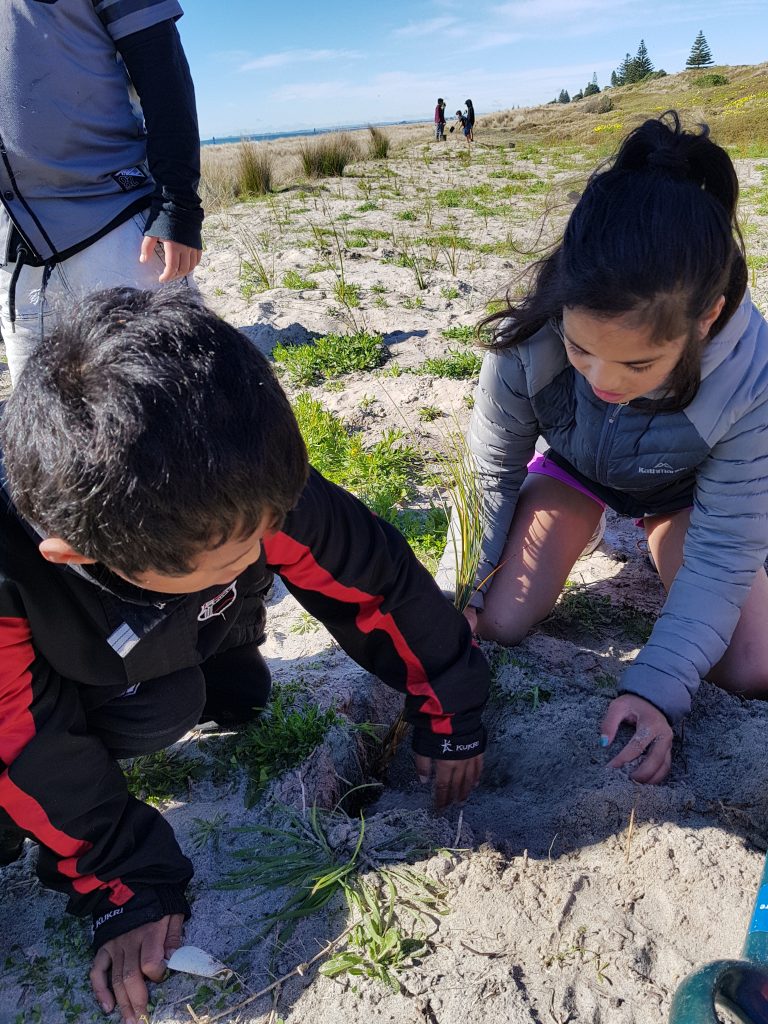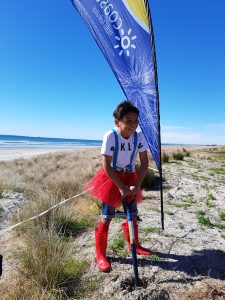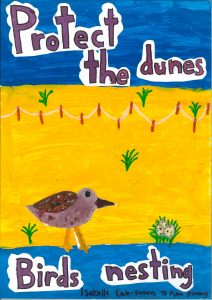
Two pairs of hands is perfect.
Students in Te Puke have been busy constructing mini bio-blitzes and surveying the water quality of streams flowing into Maketū and Little Waihi Estuaries.
With the support of Maketū Ongatoro Wetland Society (MOWS) students have been learning about the impacts of humans, pests and grazing animals on the coastal dunes systems of the Bay of Plenty.
“People don’t realise how easily they can contribute to erosion of the beach and endanger the wildlife that lives there” – Tania Bramley, Education Coordinator for MOWS.

Dune planting with MOWS.
The primary and intermediate students involved – Te Puke Primary School, Te Puke Intermediate, and Paengaroa School – start with an in-class lesson to talk about the importance of dune systems for protecting the land, and providing habitat for skinks, invertebrates, and the endangered NZ Dotterel. In term two students learnt about the impact of plastic on seabirds, and discussed the many ways that they can make a difference.

Poster by Isabelle Cap-Evans – Te Puke Primary.
Dune planting days are an absolute highlight of the year for the students, parents, and teachers alike. Te Puke Primary School’s Ngākau Māhaki Unit spent a stunning day at the beach, both preparing a site by weeding the dunes and competing to see who could get the biggest pile of pest plants.
Then planting over 150 sand binding pīngao plants, which students now refer to as Tāne’s eyebrows! They sang a beautiful waiata for Tania and Chris Ward from Coastcare who organised the dune planting.
Students followed up each of their action days creating science posters for all of the sites they have surveyed, which then became a fantastic display at Te Puke Library as well as for MOWS information stalls at local events.